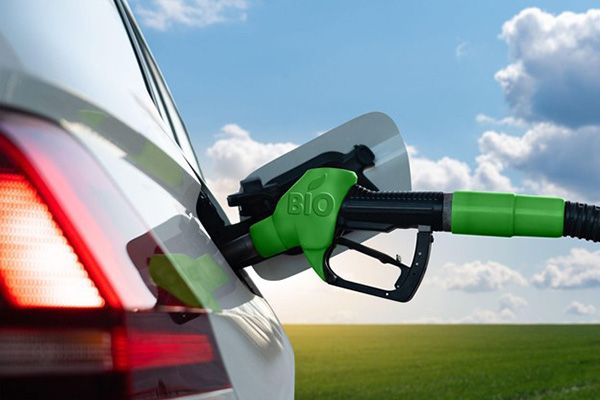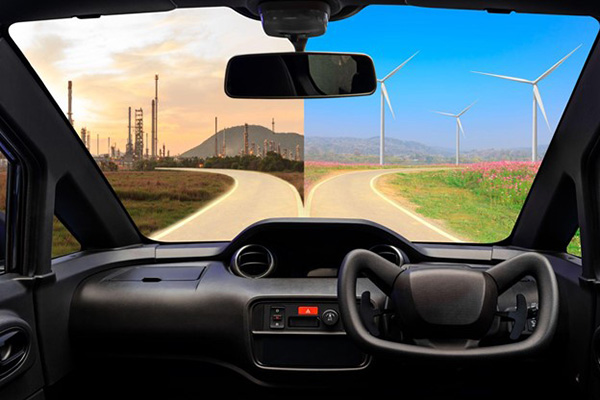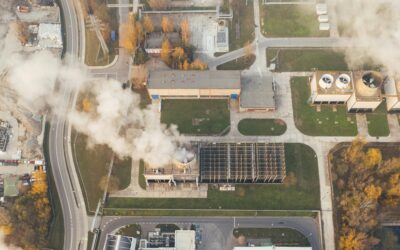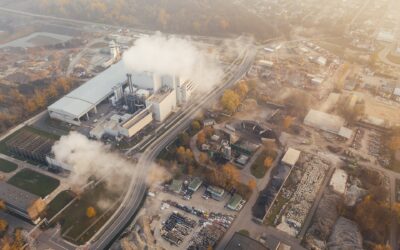Carbon-neutral fuels provide an alternative power source for the transportation sector. These fuels can replace traditional fossil fuels and do not increase, on a net basis, the amount of carbon dioxide in the atmosphere when they are combusted. New technology in carbon-neutral fuels creates an excellent sustainability opportunity for fighting climate change and global warming.
Today we’ll cover carbon-neutral fuels and what it requires to fall under the category of carbon-neutrality. Then, we’ll view how carbon-neutral fuels are used and how they are made. After that, we’ll compare carbon-neutral fuels to traditional fossil fuels. We’ll also shed light on the term climate-neutral and look into whether or not carbon-neutral fuels fall under that category. Finally, we’ll explain how important carbon offsetting is to the carbon-neutral fuel movement.
What Is Carbon-Neutral Fuel?
Carbon-neutral fuels are synthetic fuels that are created as an alternative to the liquid fuels typically burned in internal combustion engines. The defining factor of a carbon-neutral fuel is in the name itself; they are carbon neutral and do not increase or decrease the amount of carbon dioxide in the air when burned. Some carbon-neutral fuels are considered renewable energy, meaning they can be used continuously without concerns of depleting the resource in the future.
Carbon-neutral fuels do emit greenhouse gases, including carbon dioxide, when they are combusted. However, the emissions from carbon-neutral fuels equate to a net-zero amount of atmospheric carbon. The reason for this is that the fuels are typically synthesized using carbon dioxide as a component in the process. As long as the carbon dioxide used in the process is obtained from a renewable source, meaning not from fossil fuels, then there is no net gain of carbon in the atmosphere.
Carbon-neutral fuels make a great option for reducing the number of greenhouse gases that humans release into the atmosphere. With atmospheric carbon levels now 50% higher than at the start of the Industrial Revolution, carbon-neutral fuels can go a long way in helping us to keep those levels from rising. Stopping greenhouse gas levels from rising will slow global warming and the effects of climate change that come with it.
What Does It Mean to Be Carbon Neutral?
The whole purpose of carbon-neutral fuels is to achieve net-zero carbon emissions. But what exactly does carbon-neutral mean? To put it simply, carbon-neutral means that the amount of carbon emitted is offset through other means to make it so that no additional carbon enters the atmosphere.
Carbon-neutral practices go beyond carbon-neutral fuels. An example of carbon-neutral living is a person who monitors their carbon footprint and then takes steps to offset the carbon they are responsible for emitting. Activities like driving or powering your home are examples of carbon-emitting actions. You can then choose to offset the carbon you emit by purchasing carbon credits that support projects that sequester atmospheric CO2.
Carbon neutrality in fuels works in a similar way to carbon neutrality for individuals, businesses, or nations. As long as the fuel does not produce any more carbon than what already exists in the atmosphere, it is neutral. That means that at no point during the life of the fuel — from its synthesis to its distribution to its combustion — can that fuel create a net-positive carbon footprint.
What Is Carbon-Neutral Fuel Used For?
Carbon-neutral fuels can be used in the transportation sector and the energy sector. They are used to replace traditional fossil fuels in vehicles that use internal combustion engines to run. They are also used to generate electricity in power plants that use fossil fuels to generate electricity. Let’s take a look at each of these uses in more detail.
Carbon-Neutral Fuels for Transportation
Carbon-neutral fuels can replace fossil fuels in cars, trucks, and airplanes. In the United States, the majority of greenhouse gas emissions come from the transportation sector, so reducing the number of emissions in this sector would be a victory for a reduction in the total amount of emissions in the country.
More than half (57%) of the emissions within the transportation sector come from small vehicles like personal cars. Another 26% comes from medium to large-sized trucks that transport goods around the country. The use of carbon-neutral fuels can significantly reduce the number of additional carbon emissions into the atmosphere caused by personal cars and large trucks.
It might even be possible for airplanes to be powered by synthetic, carbon-neutral fuels. European scientists have successfully created a jet fuel alternative using carbon dioxide, solar energy, and water. With the aviation industry emitting 915 million tonnes of carbon dioxide in 2019, sustainable aviation fuel could present a great strategy for reducing the industry’s annual emissions.
Carbon-Neutral Fuels for Energy Generation
In 2021 the United States relied on fossil fuels to generate 60.8% of its electricity. Power plants burn fossil fuels that turn generators to create electricity. Carbon-neutral fuels can provide an alternative to the fossil fuels used in this type of electricity generation.
The most appealing part of using carbon-neutral fuels to generate electricity is that the carbon dioxide released from burning the fuel can be recaptured and used again to create more carbon-neutral fuel.
Capturing carbon emissions from power plants and having the ability to reuse that carbon as a future source for electricity generation is yet another way carbon-neutral fuels can reduce the amount of atmospheric CO2 emissions.
How Do You Make Carbon-Neutral Fuel?
Carbon-neutral fuels are created with the aid of chemistry. A research team led by the U.S. Department of Energy discovered an electrocatalyst that can transform carbon dioxide and water into ethanol. Ethanol is a major component of gasoline and is necessary for creating carbon-neutral fuels.
Carbon dioxide and water molecules are separated using electrolysis and then reassembled to create ethanol. Traditionally, carbon dioxide was difficult and costly to separate. However, the discovery of this electrocatalyst has improved the efficiency of the process. That means that carbon capture can occur from pre-existing industrial processes before it is emitted or by direct air capture and then transformed into ethanol for use in carbon-neutral fuels.
If the electricity used in this process is derived from a renewable source like wind energy or solar power, then the creation of the fuel does not rely on anything that emits carbon dioxide.
Another carbon-neutral fuel source, called biofuel, comes from plants. Both ethanol and biodiesel are examples of biofuel. Ethanol is created through a fermentation process in which bacteria and yeast convert sugars from plants into ethanol. The ethanol is then used as an additive to fuels. Biodiesel is created by combining alcohol with vegetable oil or other oils from animal fats. Internal combustion engine vehicles already on the road can run on biofuel.
What Is the Difference Between Carbon-Neutral Fuels and Fossil Fuels?
The primary difference between carbon-neutral fuels and fossil fuels is how they are created and how they affect the environment. Carbon-neutral fuels result in net-zero emissions, while fossil fuels result in higher greenhouse gas concentrations in the atmosphere. Let’s compare biofuel and coal to better understand the differences.
Is Biofuel Carbon-Neutral?
Biofuels are the most available carbon-neutral fuel. While many other carbon-neutral fuels are being developed, biofuel is already produced and largely available. Because biofuel turns biomass like wood and vegetation into fuel, it is considered carbon-neutral. The carbon dioxide it takes from biomass is already in the carbon cycle, so it is not adding additional carbon into the cycle.
Is Coal Carbon-Neutral?
Coal is not carbon-neutral. In fact, coal emits more carbon than petroleum fuels or natural gas when combusted. The reason coal is not carbon-neutral is that it is removed from underground, where it is safely stored. Fossil fuels underground cannot emit carbon dioxide into the atmosphere.
When we remove fossil fuels like coal from beneath Earth’s surface and burn them, we emit more carbon dioxide into the atmosphere than the natural carbon cycle can take. This results in a surplus of CO2 and causes global warming.
What Is the Difference Between Carbon-Neutral and Climate-Neutral?
Carbon-neutral applies to carbon dioxide emissions only, while climate-neutral applies to carbon dioxide and other harmful greenhouse gases. Climate neutrality is the best option for the state of the Earth, but carbon neutrality is a great place to start reducing the negative impacts we have on the planet.
The next step toward climate neutrality is capturing other greenhouse gases, like methane, and finding a way to reuse them like carbon is used in carbon-neutral fuels. This way, we can prevent more methane, which has 25 times more of a warming effect than carbon dioxide, from entering the atmosphere.
What Role Do Carbon Credits Play in Carbon-Neutrality?
Carbon offsetting plays an essential role in carbon neutrality and carbon-neutral fuels. Individuals and businesses can both benefit from purchasing carbon offset credits to become carbon-neutral. Carbon-neutral fuels can utilize carbon offsetting as a way to ensure the fuel is actually carbon-neutral.
For example, let’s say that a carbon-neutral fuel is synthesized with electricity that is not from a renewable source. The carbon footprint from non-renewable electricity can be offset by purchasing carbon credits that support projects that remove carbon dioxide from the atmosphere or promote clean energy like wind power or solar power. By offsetting the carbon in this manner, the fuel then becomes carbon-neutral.
Carbon-Neutral Fuels for a Clean Future
As an excellent alternative fuel source to traditional fossil fuels, carbon-neutral fuels can power the transportation and electricity generation sectors without harming the environment. By using biomass to create fuel or by using only clean electricity, carbon dioxide, and water, we have discovered ways to create renewable fuel sources that have net-zero emissions when combusted.
As more advanced forms of carbon-neutral fuels become available, we can see the necessary transition away from fossil fuels occur and watch as Earth’s increasing temperature stabilizes.
If you’re interested in becoming a carbon-neutral citizen, check out Terrapass’ carbon offsetting products and see how you can make a difference.
Brought to you by terrapass.com
Featured image:











